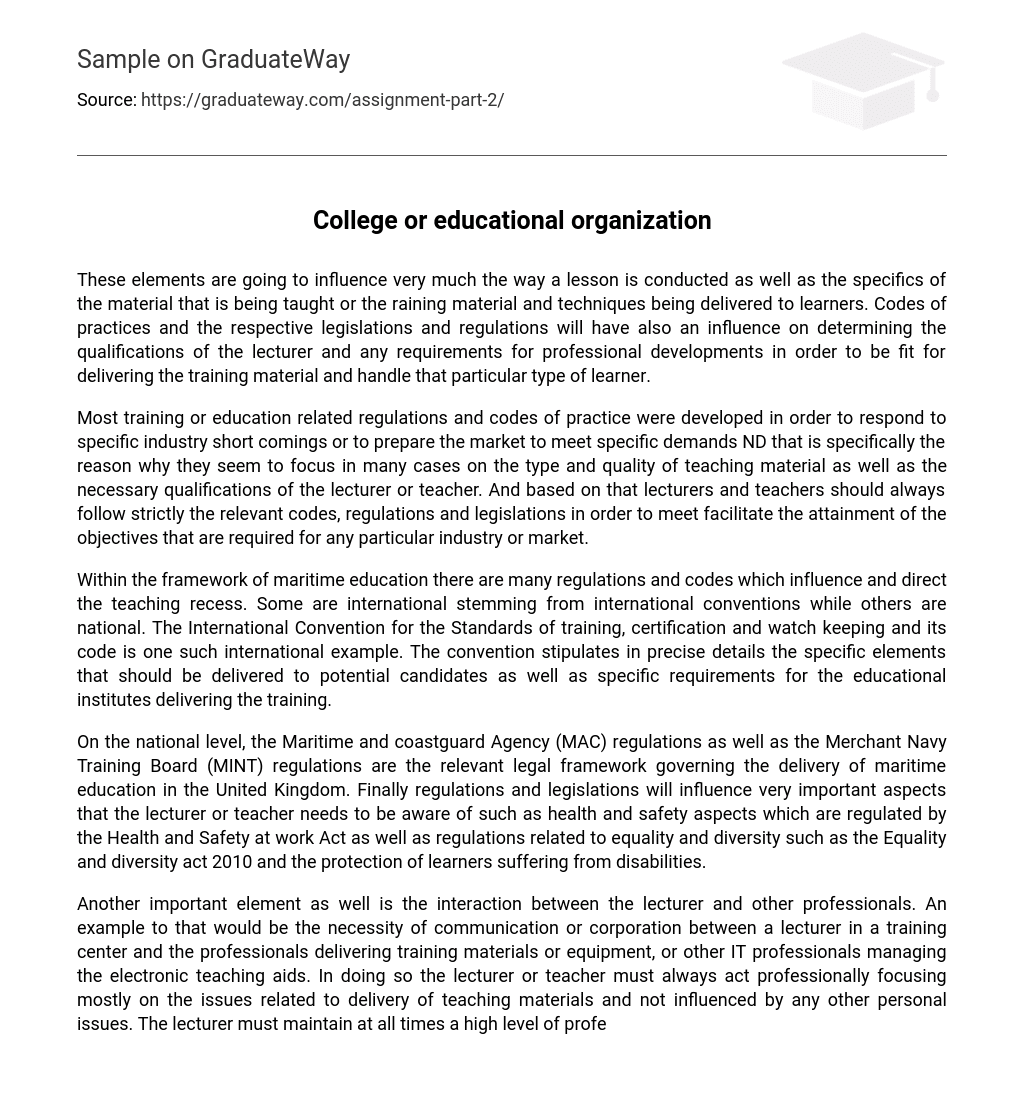These elements are going to influence very much the way a lesson is conducted as well as the specifics of the material that is being taught or the raining material and techniques being delivered to learners. Codes of practices and the respective legislations and regulations will have also an influence on determining the qualifications of the lecturer and any requirements for professional developments in order to be fit for delivering the training material and handle that particular type of learner.
Most training or education related regulations and codes of practice were developed in order to respond to specific industry short comings or to prepare the market to meet specific demands ND that is specifically the reason why they seem to focus in many cases on the type and quality of teaching material as well as the necessary qualifications of the lecturer or teacher. And based on that lecturers and teachers should always follow strictly the relevant codes, regulations and legislations in order to meet facilitate the attainment of the objectives that are required for any particular industry or market.
Within the framework of maritime education there are many regulations and codes which influence and direct the teaching recess. Some are international stemming from international conventions while others are national. The International Convention for the Standards of training, certification and watch keeping and its code is one such international example. The convention stipulates in precise details the specific elements that should be delivered to potential candidates as well as specific requirements for the educational institutes delivering the training.
On the national level, the Maritime and coastguard Agency (MAC) regulations as well as the Merchant Navy Training Board (MINT) regulations are the relevant legal framework governing the delivery of maritime education in the United Kingdom. Finally regulations and legislations will influence very important aspects that the lecturer or teacher needs to be aware of such as health and safety aspects which are regulated by the Health and Safety at work Act as well as regulations related to equality and diversity such as the Equality and diversity act 2010 and the protection of learners suffering from disabilities.
Another important element as well is the interaction between the lecturer and other professionals. An example to that would be the necessity of communication or corporation between a lecturer in a training center and the professionals delivering training materials or equipment, or other IT professionals managing the electronic teaching aids. In doing so the lecturer or teacher must always act professionally focusing mostly on the issues related to delivery of teaching materials and not influenced by any other personal issues. The lecturer must maintain at all times a high level of professional integrity and show respect for others.
Identifying and being completely aware of the different points of referral in order to meet the individual needs of learners is another important aspect for the lecturer or teacher. In many cases situations could develop with learners were the interaction with an outside agency or organization will be necessary such as the need to contact social services in some cases or the police in case of criminal behavior. There could be internal points of referral as well within the college or educational organization such as counselors, chaplaincy or student services.
It is very important that the lecturer or teacher be familiar with the means and different cases under which he could contact such points or referral. Finally, subject knowledge and experience are very important elements for the lecturer that if mastered well, will provide him with confidence in delivering the learning materials and equally make learners confident while learning from him. Lecturers and teachers should always try as much as possible to update their existing knowledge and if possible seize opportunities for the update and improvement of practical experiences as well where relevant.





